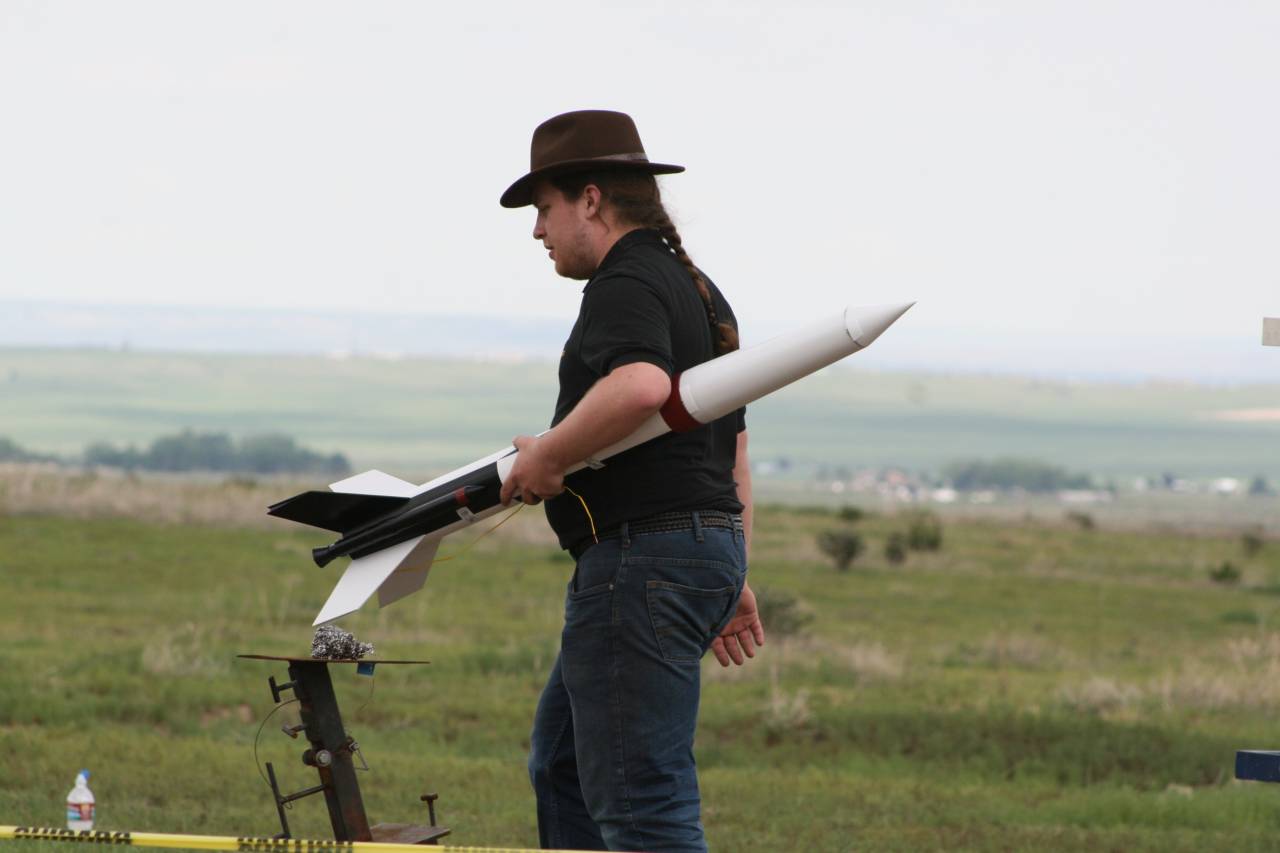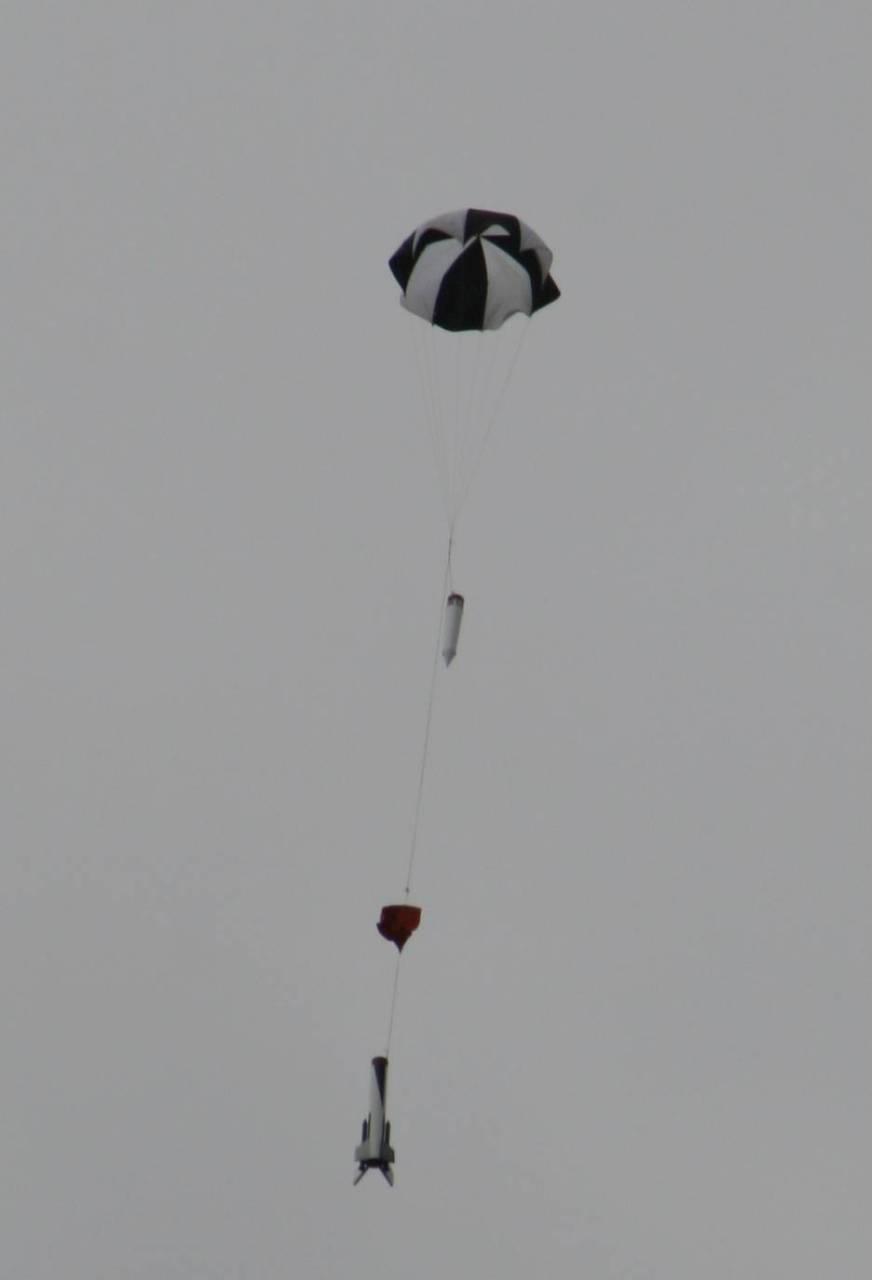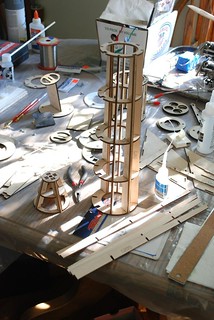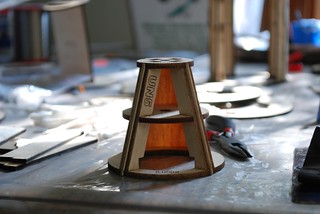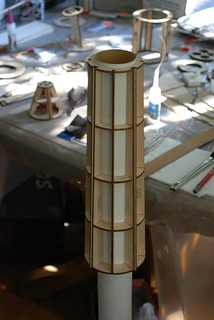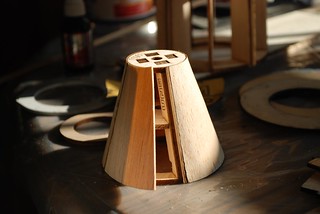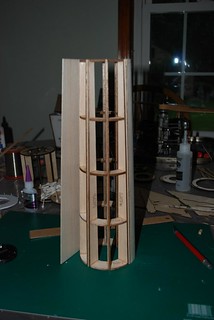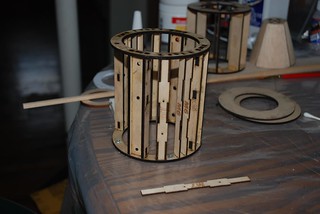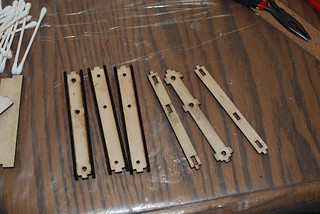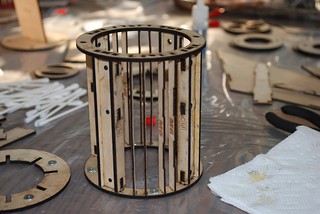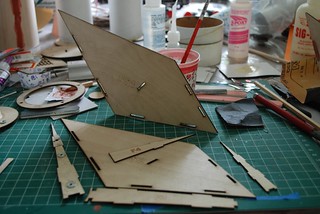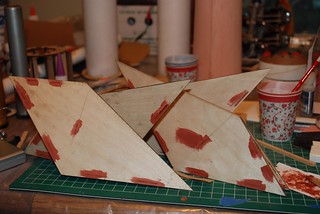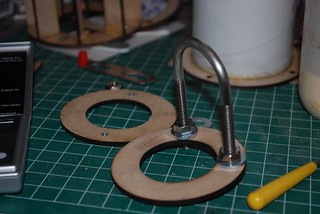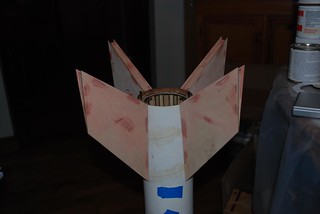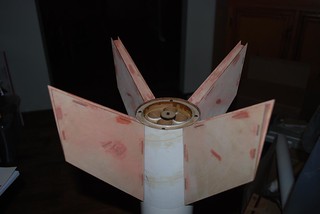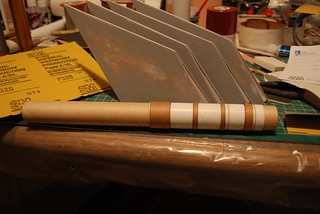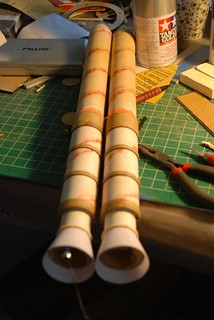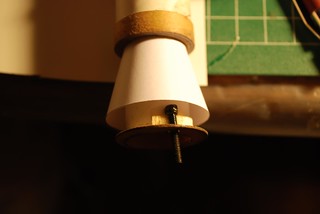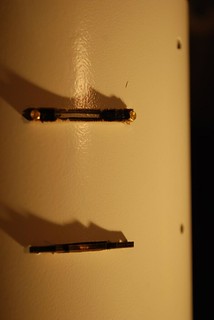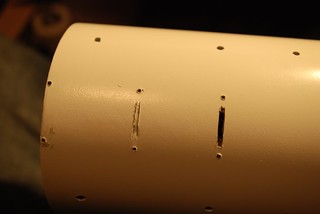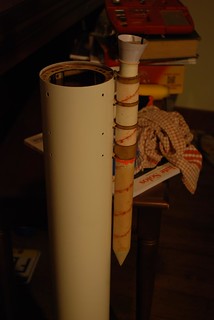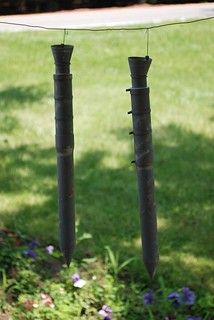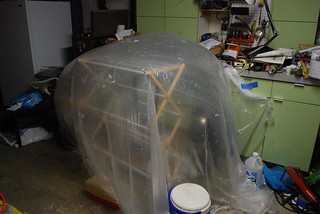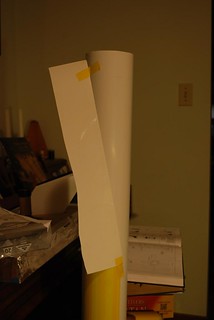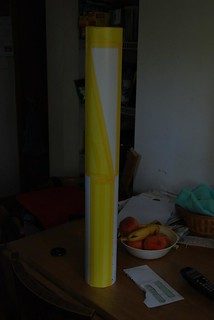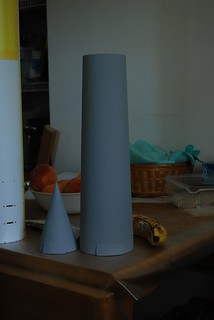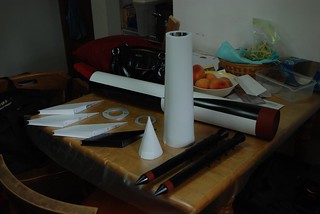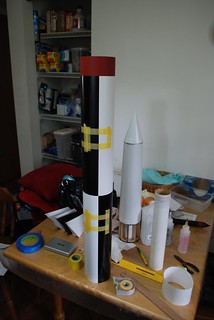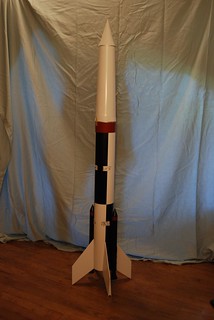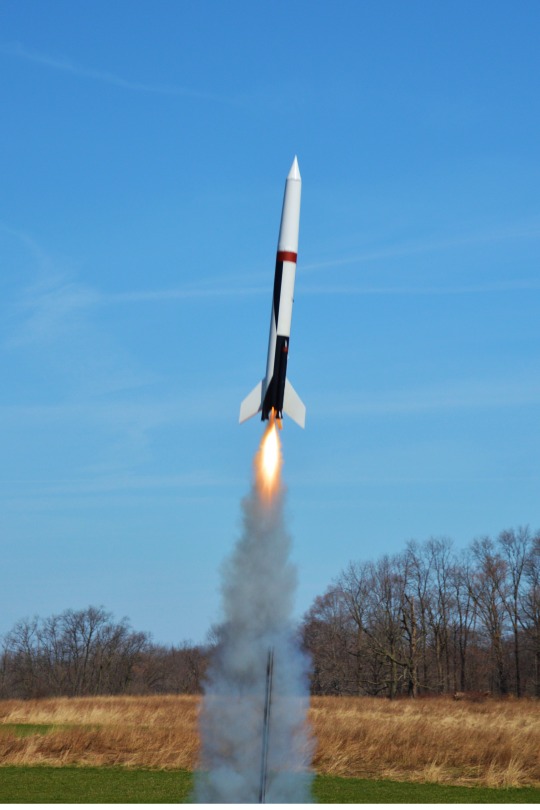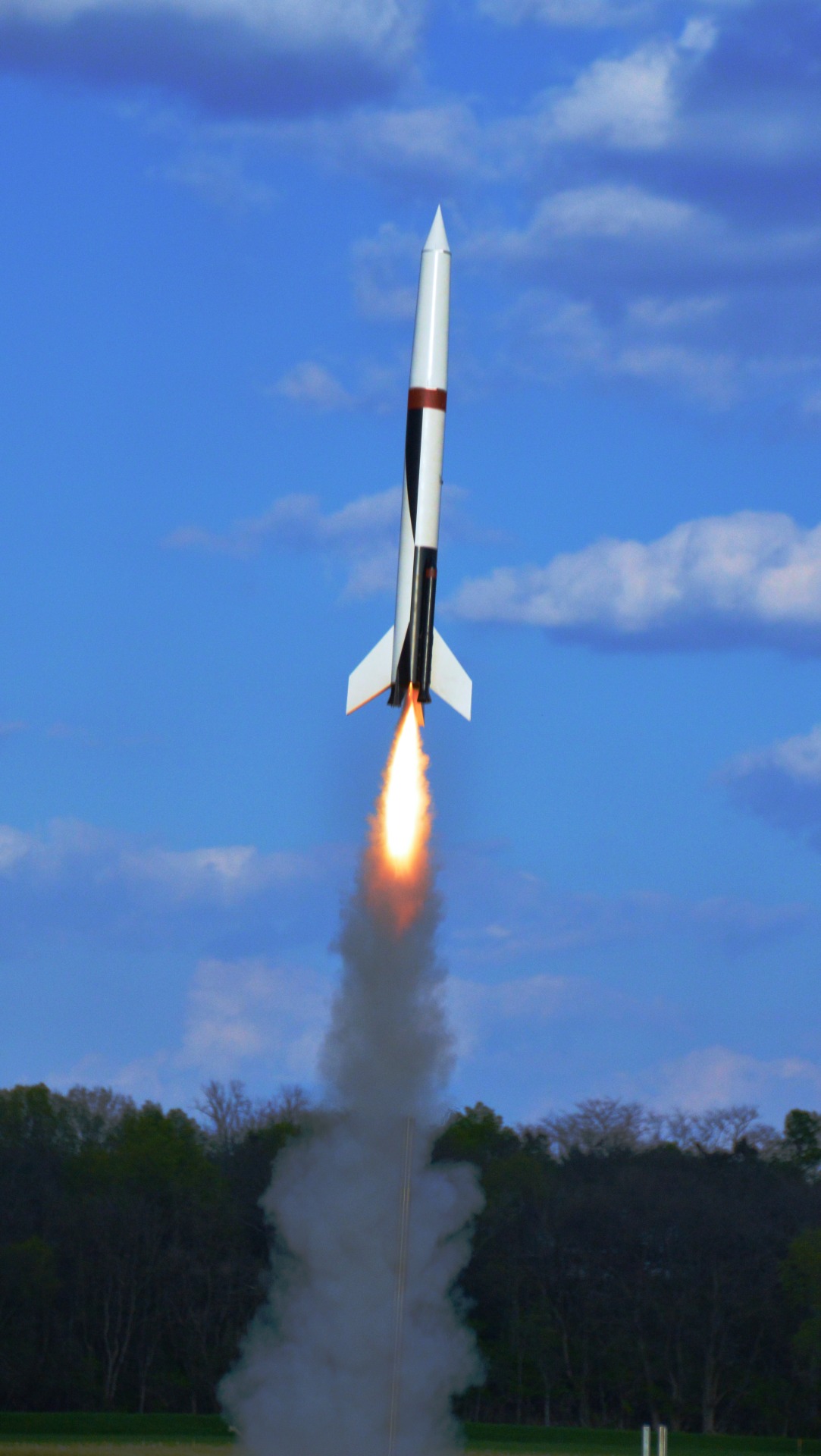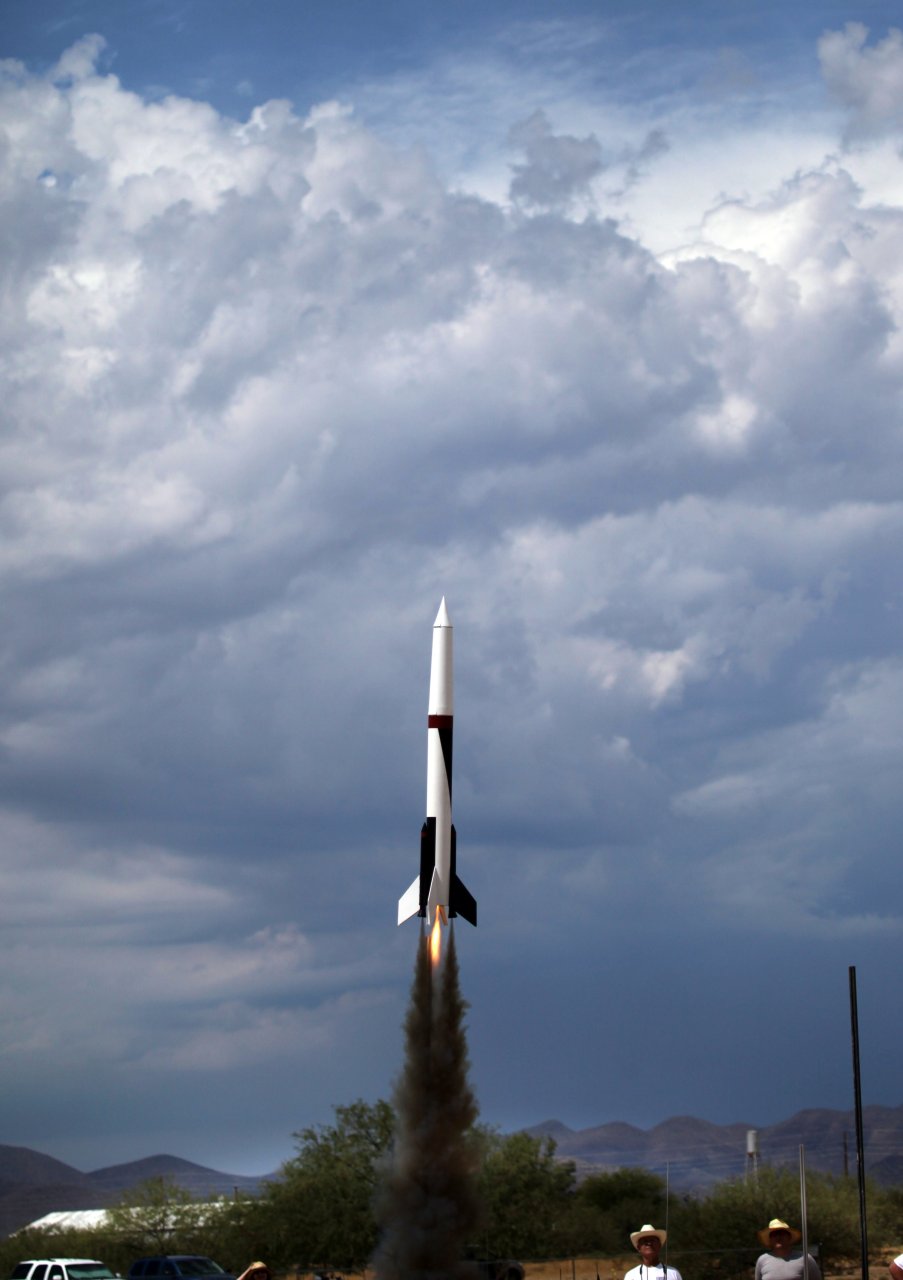TheAviator
Well-Known Member
- Joined
- Jan 18, 2009
- Messages
- 935
- Reaction score
- 122
A quick post on this model tonight and more at a later date.
Over the past month and a half, my brother and I worked on our NARAM-56 scale model. Working on my successful if somewhat rushed BT70 model from N55, we chose a 4" LOC tube based model for Giant Sport Scale at N56. The 4" main airframe worked out to using 29mm MMT coupler, 29mm MMT, and BT-55 coupler for the Recruit motors to within 2% of scale. These three tube sizes actually nest perfectly; the only disadvantage is that they are somewhat heavy overall.
The center motor mount is interchangeable. We built a 38mm, 29mm, and 4x24mm mount for the bird and ended up using the 29mm. The fins bolt on through a 1/8" plywood mount built into the lower airframe; the interchangeable MMTs also bolt to this structure. This makes painting the difficult roll pattern much easier, as you don't need to mask fins. The fins are either solid black (1) or solid white (3), so no masking there.
The only problem with this model is weight. We ended up stripping unnecessary parts from the model to bring it down under the 1500g limit. Two recovery U-bolts, a deployment bag and drogue, the (unused) altimeter sled, and (initially) the two CTI 24mm motors in the recruits were stripped to bring the model from ~1.9kg to ~1.48kg. Successful flights were made, one with a 29mm 3G G54 and one with two 24mm 1G E22s and a 29mm 1G F29. The second flight was made only after Tom Ha graciously allowed us to borrow a 29mm 1G case and sold me the reload.
Anyways, without further ado, pictures by Chris Taylor of NARAM Live!
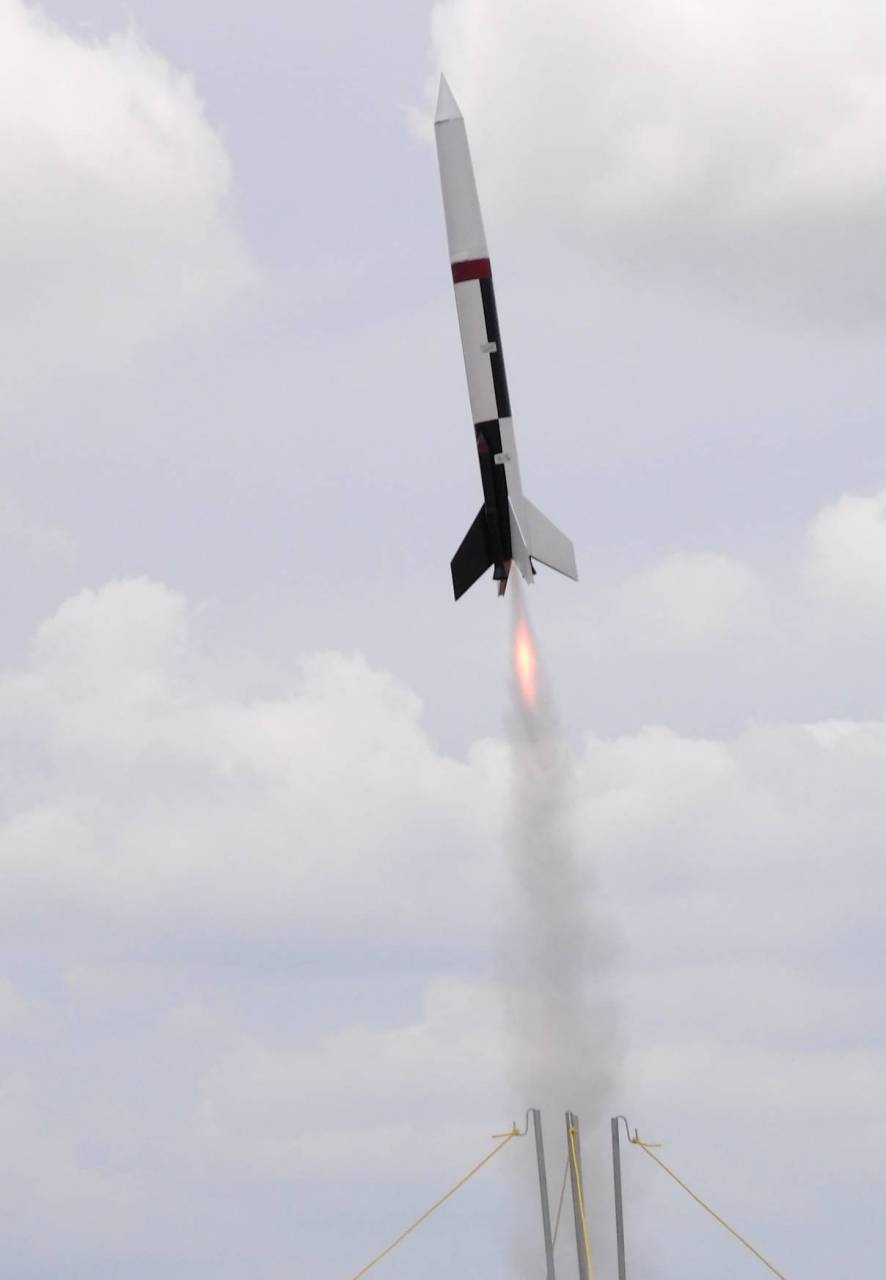
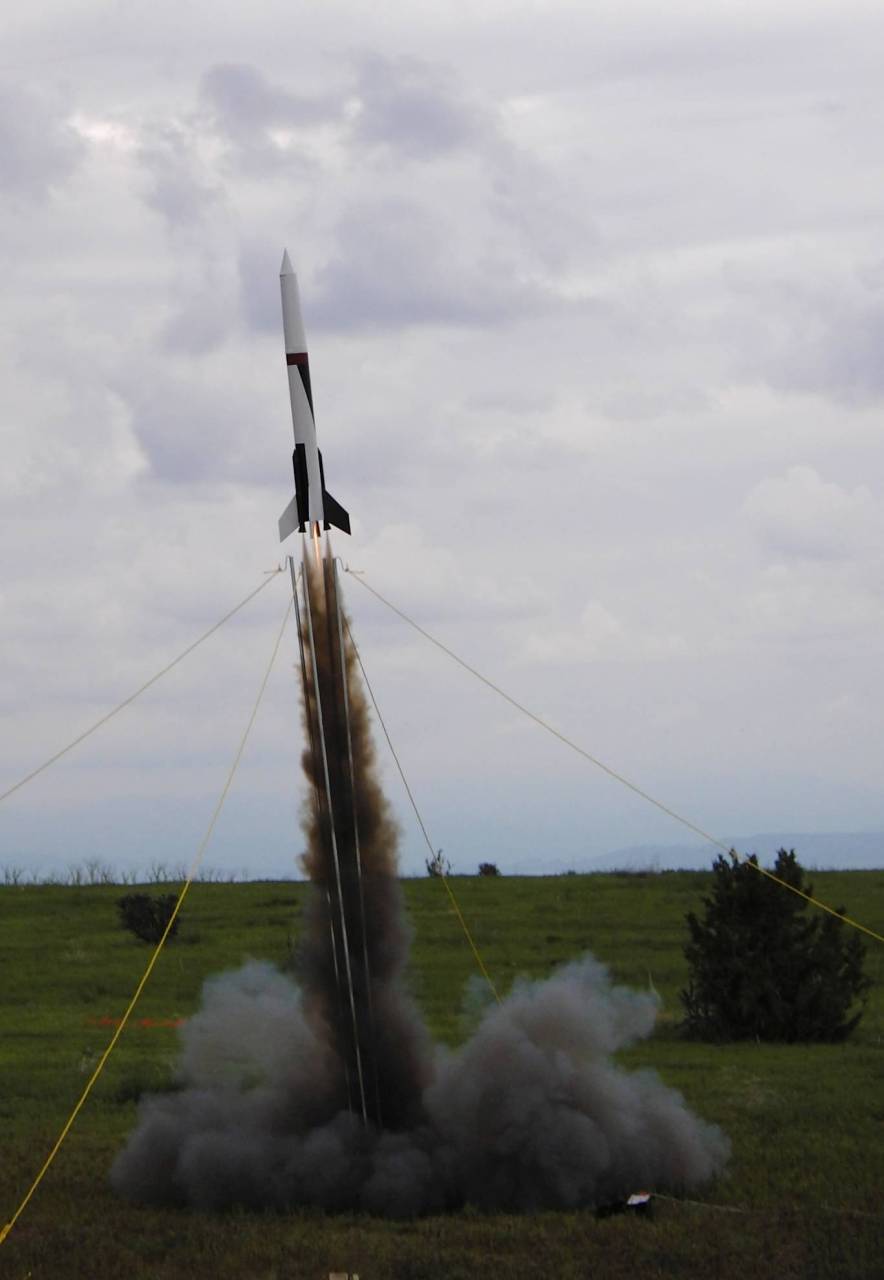
Over the past month and a half, my brother and I worked on our NARAM-56 scale model. Working on my successful if somewhat rushed BT70 model from N55, we chose a 4" LOC tube based model for Giant Sport Scale at N56. The 4" main airframe worked out to using 29mm MMT coupler, 29mm MMT, and BT-55 coupler for the Recruit motors to within 2% of scale. These three tube sizes actually nest perfectly; the only disadvantage is that they are somewhat heavy overall.
The center motor mount is interchangeable. We built a 38mm, 29mm, and 4x24mm mount for the bird and ended up using the 29mm. The fins bolt on through a 1/8" plywood mount built into the lower airframe; the interchangeable MMTs also bolt to this structure. This makes painting the difficult roll pattern much easier, as you don't need to mask fins. The fins are either solid black (1) or solid white (3), so no masking there.
The only problem with this model is weight. We ended up stripping unnecessary parts from the model to bring it down under the 1500g limit. Two recovery U-bolts, a deployment bag and drogue, the (unused) altimeter sled, and (initially) the two CTI 24mm motors in the recruits were stripped to bring the model from ~1.9kg to ~1.48kg. Successful flights were made, one with a 29mm 3G G54 and one with two 24mm 1G E22s and a 29mm 1G F29. The second flight was made only after Tom Ha graciously allowed us to borrow a 29mm 1G case and sold me the reload.
Anyways, without further ado, pictures by Chris Taylor of NARAM Live!






